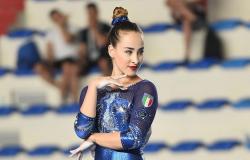In 2012 the Sardinian director Giovanni Columbu told the last days of the life of a Sardinian Christ, not beautiful, genuine, in a highly evocative film
From:
Pietro Lavena
The passion of Christ has always fascinated and moved not only Christians, but anyone who knows how to grasp the intensity of a dramatic and vivid narrative such as that given by the Gospels on the last days of the life of Jesus of Nazareth.
The betrayal of Judas Iscariot and the arrest in Gethsemane, the trial of the Sanhedrin and that conducted by Pilate, the exchange with Barabbas, Jesus’ ascent to Golgotha and his death on the cross. Finally, the resurrection which is celebrated on Easter day.
Moments that have always inspired art, literature and cinema. From Pier Paolo Pasolini to William Wyler, from Franco Zeffirelli to Nicholas Ray to Mel Gibson. Their cameras retraced and re-proposed those scenes with always different and in any case extraordinary actors and interpretations.
ON KING. Even the Sardinian director John Columbuin 2012, he told “his” passion in the film On King, produced by Rai Cinema and Luches and distributed by Nanni Moretti’s Sacher Distribuzione who was fascinated by his Sardinian colleague’s project. A classic and powerful title, “The King”, for an 80-minute feature film entirely shot in Sardinia with Sardinian actors and in the Sardinian language. The director from Nuoro, born in 1949, returned to directing eleven years after the great success of Archipelagos (2001)
THE CAST. The actors were all non-professionals, no film academics, but all, Columbu stressed, had “an extraordinary predisposition for acting”. They came from different areas of the island and spoke different declinations of the Sardinian language.
Fiorenzo Mattu played Jesus, Pietrina Menneas was Mary, Tonino Murgia the high priest Caiaphas, Paolo Pillonca played the role of Pontius Pilate, Antonio Forma was Judas, Luca Todde the apostle Peter, Giovanni Frau played John, Bruno Petretto was Joseph of Arimathea , the man who was responsible for burying the body of Jesus. Other interpreters came from mental health centers. “Of these, I was very struck by the way of participating in an event – said the director -. They watch by looking elsewhere or with their eyes lowered or as if turned inside themselves, almost as if they were experiencing that event internally”.
Over 400 stage costumes traced in the field and curated in collaboration with the Teatro Lirico of Cagliari. The Sardinian styles of wool and woolen cloaks and velvet skirts were thus placed alongside Roman armour, contributing to creating an indefinite setting full of contaminations.
THE PLOT. The film, which takes inspiration from the Gospels, tells the last days of Jesus’ life revisited and set in the barren and stony landscapes of central Sardinia, made dark and distressing by expert direction. The story begins with Mary in tears, collapsed on the body of her now dead son in her tomb. The story, through a series of leaps backwards and through the characters’ dreams or memories, traces the path that led to Judas’ betrayal of the Master. Then the trial, Peter denying Jesus three times, the condemnation of the people, the long journey towards the hill where the cross will be hoisted which in this case is Mount Corrasi in Oliena. Finally the crucifixion amidst the screams of the enemies and the astonished silence of the women who witness one of the most significant moments in human history.
THE PROJECT. Columbu, explaining the genesis and realization of the project through the director’s notes provided on the occasion of the participation of On King in competition at the 2012 Turin Film Festival, he wrote: “The idea for this film dates back to several years ago. I was in Rome, in the church of Santa Maria in via Lata, and I was struck by a table showing the songs in four columns of the Gospels that describe the sufferings inflicted on Jesus. Those descriptions made me think of different witnesses who had seen and then told the same event based on their own perception. The impersonal style of the individual texts seemed to transform, referring back to the narrators and revealing the uncertain tone but even more likely than a memory. In the following days I tried to read the Gospel transversally, moving from one text to another, and I discovered that the story took on an unexpected dramatic force.”
“As never before – Giovanni Columbu further explained – I felt the pain of the tragedy that was being narrated and the painful experience of all human vicissitudes. It was then that I thought of a film about the Gospel, in which the scenes were repeated, almost as in Rashomon (1950) by Kurosawa. I would have transposed the story to Sardinia, because it is the world that I love and know best, permeated with values that in some cases seem to refer to the Old rather than the New Testament. Two universes very distant in space and time would have met, without being surprised by each other, finding confirmation in the reality of that dream that is in the souls of many, to discover Jesus, here, among us”.
“During the implementation, comparing the project with the outcomes that gradually emerged, the idea of ”parallel steps” referring to individual evangelists gave way to a perhaps less ambitious but equally fascinating idea, that of a dream, in in which the events are repeated in their ongoing drama and in a non-linear sequence. Instead, the idea of transposition to Sardinia has gained prominence: an idea that has a precedent in painting rather than in cinema”.
THE FILM. By modifying their geographical coordinates, Columbu recounts historical facts in a new light and from a new and original point of view. Christ does not follow the canons of traditional pictorial, iconographic and cinematographic representation. Fiorenzo Mattu’s face, like that of other actors, is “dirty” with truth, hollow, bruised, bristly. Not beautiful. “A choice that perhaps will trigger discussions a priori, but I don’t think after the fact – predicted Columbu interviewed during the filming -. If it had been a provocative choice I wouldn’t have made it. On the contrary, it is a choice that is within the spirit of the Gospel and of a reading that finds response: that of a Messiah who has no beauty that can arouse satisfaction in our eyes, as Isaiah says in his prophecy, the only biblical passage in which there is a description of Jesus”.
“Mary – added Columbu – is a Mediterranean mother, painful and weeping but also proud and strong, interpreter of an inexorable principle of justice”.
The director from Nuoro worked on the screenplay for years but, once on set, the script was reduced to a few notes. “We limited ourselves to reading a passage from the Gospel, I gave instructions and we proceeded with the staging. No rehearsals, so as not to lose the freshness. Sometimes I introduced a change of lines or a development of actions, to force the actors to improvise and interact. Or, to increase the tension, without warning, I would ask things that I knew were more or less impossible, such as continuing the recitation without using words. And the emotions had to grow, also due to the impossibility of speaking, and if possible become uncontainable “.
An almost avant-garde working method, where the operators had to film everything, without cuts, as if faced with a real event, making the film a documentary rather than a staging. The final result brought images to the screen that never sought stylistic affectation but, on the contrary, were often deliberately imperfect, rough and for this very reason convincing. The use of the Sardinian language, such as the Aramaic proposed in The Passion by Mel Gibson, gave the feature film a further mysterious harshness which, even today, makes it worth watching On King an all-encompassing and profoundly singular experience.




